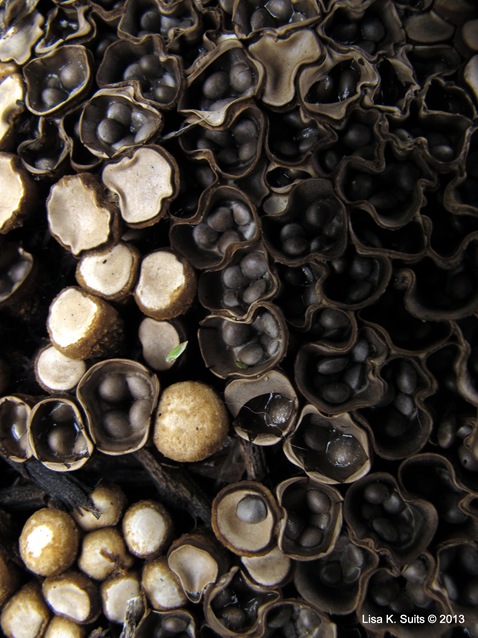 |
| Cyathus stercoreus. Each cup is about 1/4" across. |
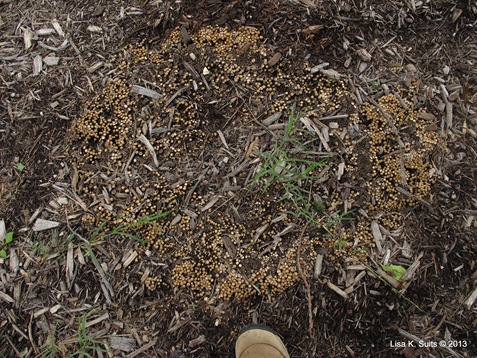
All those dots in the photo above are hundreds of bird’s nest fungi, Cyathus stercoreus. I see Crucibulum laeve and Cyathus striatus all over the place in the woods, but this was the first time I’d seen these. There’s my foot for scale.
I don’t know if they were growing in a circle in association with an old stump, or if they were working their way outward from a central starting point, or if that’s just how they all ended up.
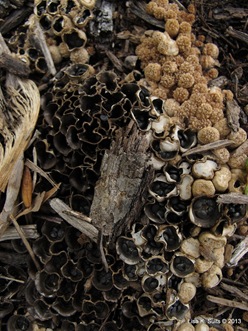 | Never saw the other two familiar bird’s nest fungi growing in such a dense mass like this. That was my first tip-off that something wasn’t right. |
Cyathus striatus has a very obvious grooved inner surface, and Crucibulum laeve has white eggs. These had neither of those things.
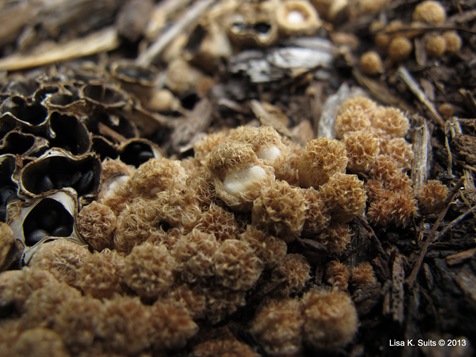
Above, that one right in the middle has a shaggy cap which is lifting off to reveal the next surface, smooth and white.
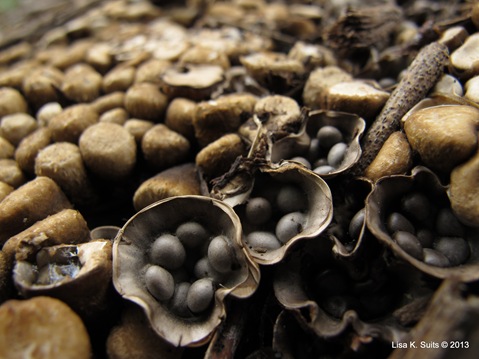
I’m just going to say this fast: the eggs are called peridioles and each one has a funiculus attached to it (up to 8" long) which is a coiled cord that’s sticky on the innermost end and when a raindrop hits the nest the funiculus uncoils and shoots the peridiole up to three or four feet (funiculus attached) and if it hits something it whips around it like a tetherball so when the spores are released from the peridiole they can disperse further.
I’ve said it before and I’ll say it again: this is something I’d like to see.
I also have to say I'm a little surprised at not being able to find any online imagery of a funiculum in action. Makes me think all the descriptions are just regurgitated descriptions. Kind of like what I just did.
If you find a bunch of bird's nest fungi and you look around, sometimes you can find the flung eggs a few feet away, stuck to plants and houses.
I know next time I come across any bird’s nest fungi I’m going to be poking around a little more seriously. Bringing a safety pin.
Four feet away, there was this.

This is Agrocybe dura (or A. molesta, species I or III—don’t ask) common name “cracked earthscale.”
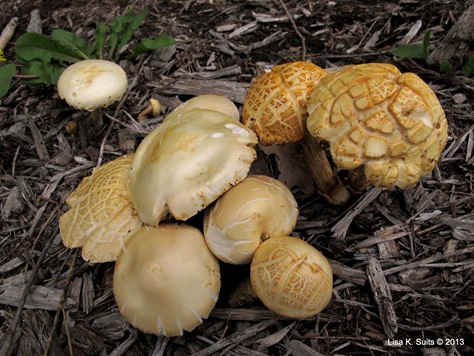
The cracking is typical. Fine with me!
One of my best pals said walking with me is like walking with a dog, I have to stop and sniff everything every few feet. I was with a different best pal who was being pretty patient. I spent almost 15 minutes in this 4-foot area before he started openly hoping we could go soon.
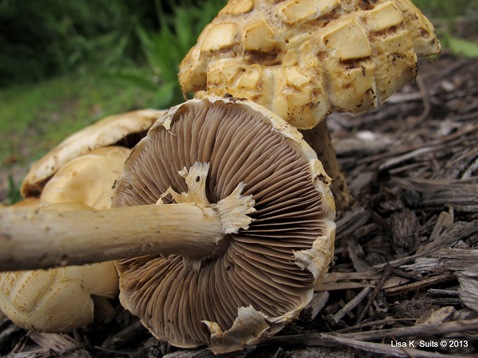
The gills start out white, and darken with age. It has an evanescent ("disappearing quickly") ring, which you can see pieces of here.
The wonderful texture, below, makes it all worthwhile.
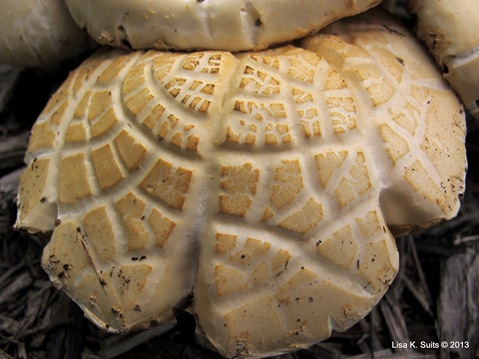 |
| Click to view large, I insist! |
There is a group on Flickr called “Texture Whores.” Yes, I have participated.
No comments:
Post a Comment